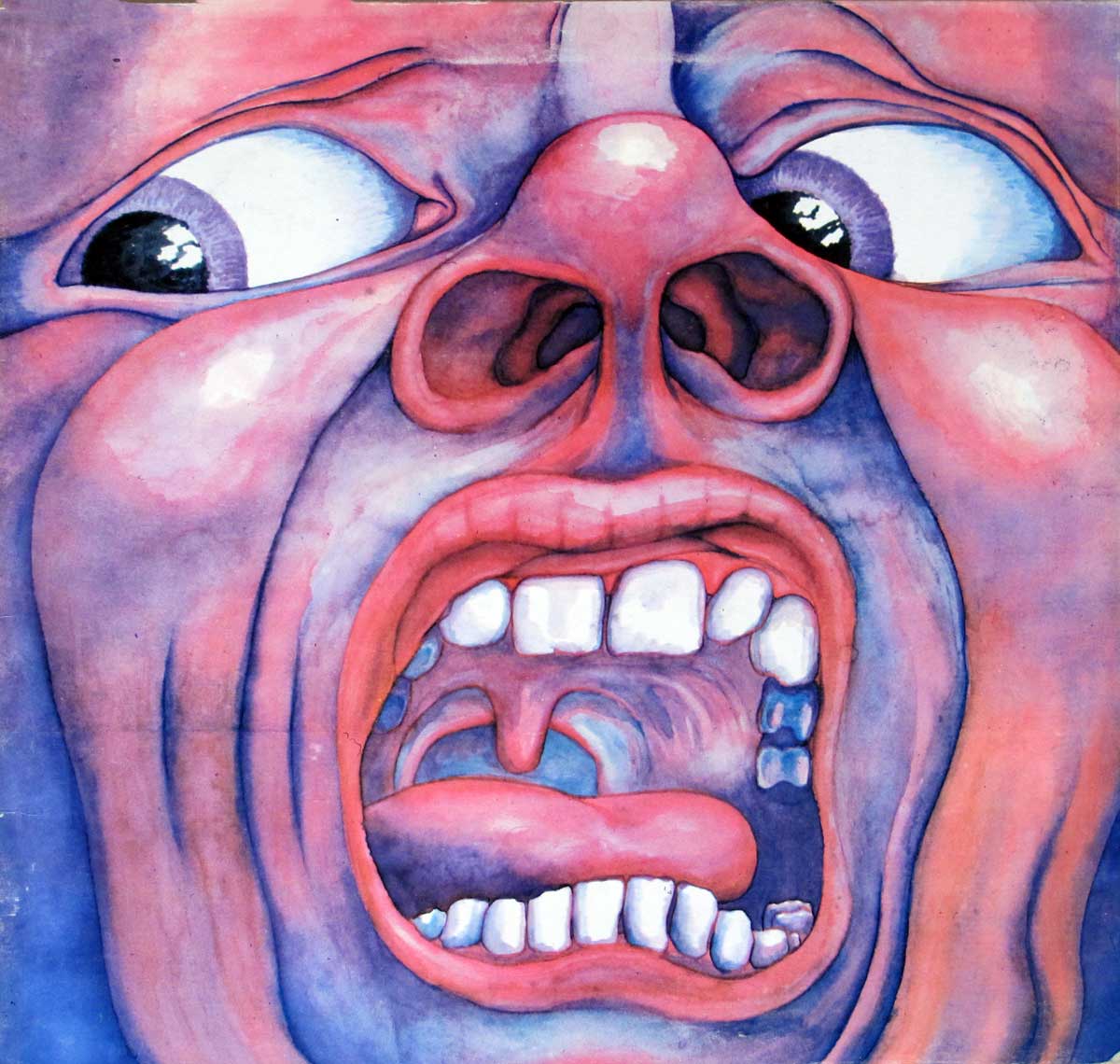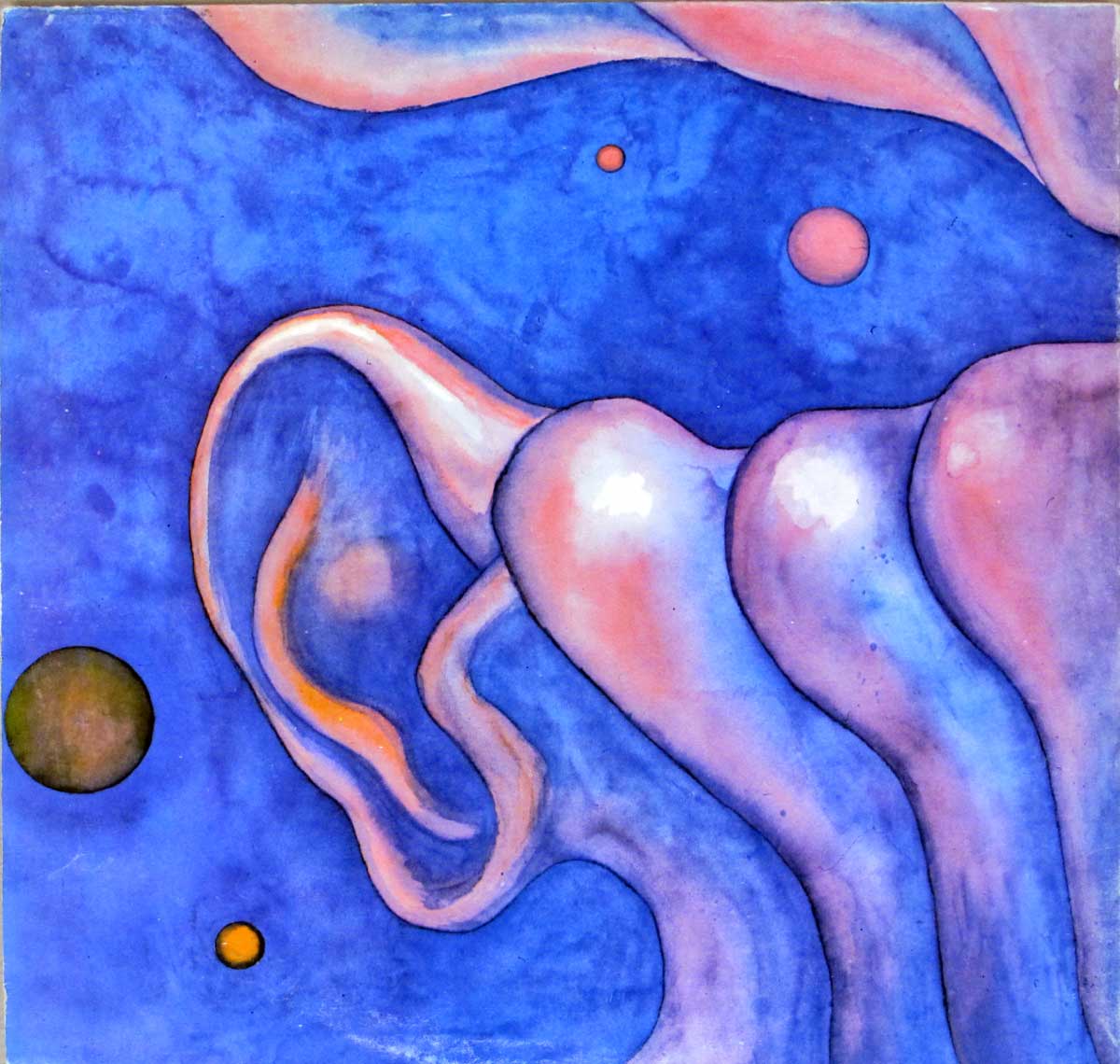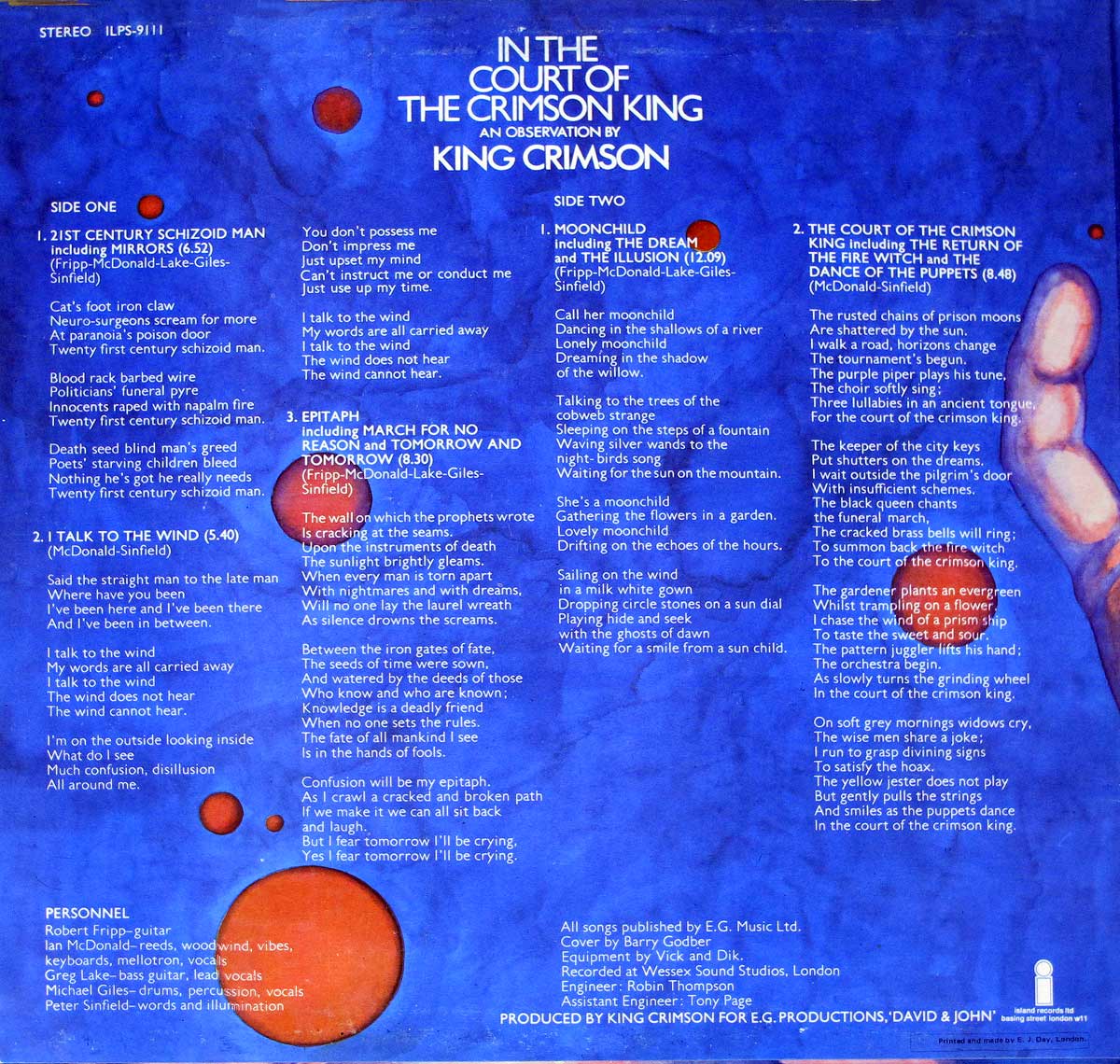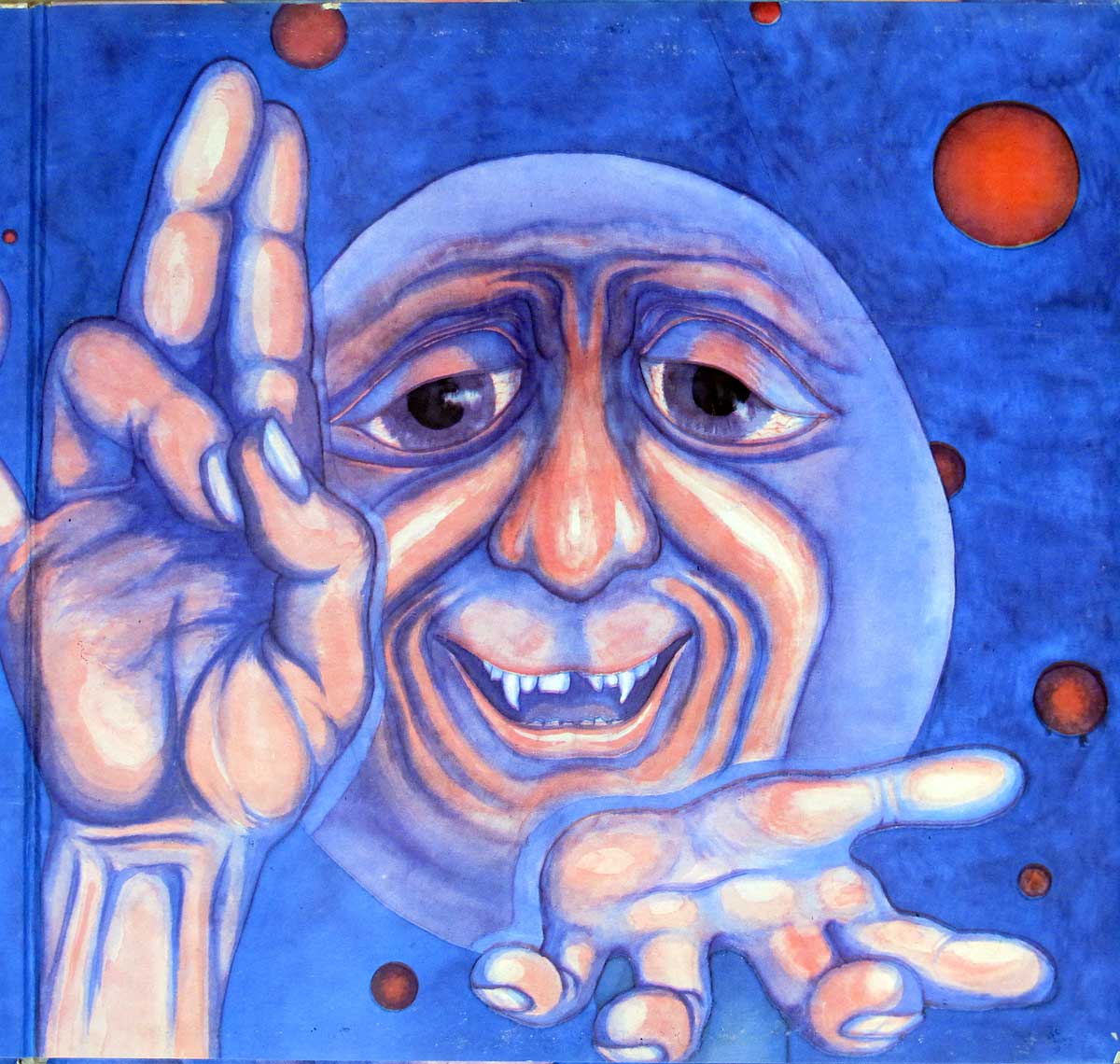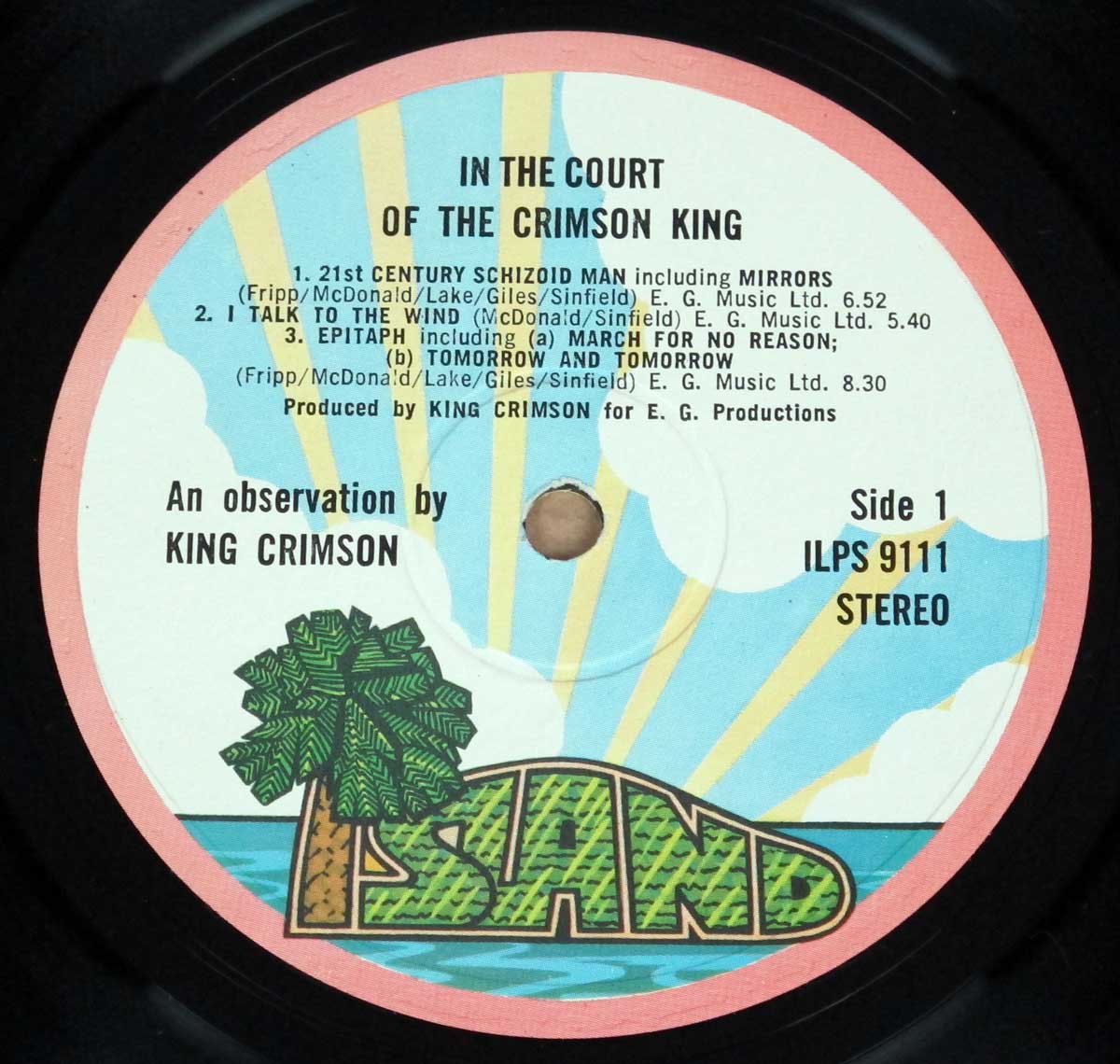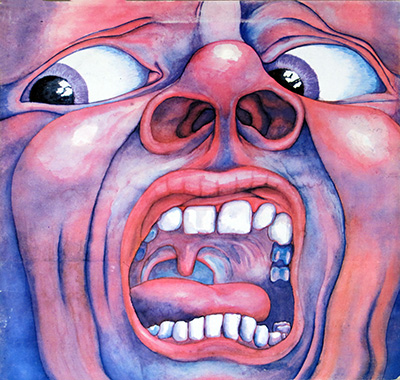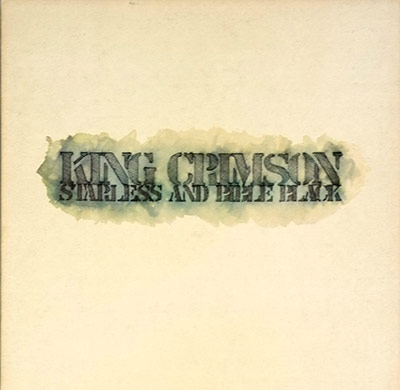"In The Court Of The Crimson King" Album Description:
King Crimson's "In the Court of the Crimson King" stands as a monumental and influential masterpiece within the realm of progressive rock. Released in 1969, this debut album not only revolutionized the genre but also left an indelible mark on the music landscape as a whole. With its iconic UK pink rim A2/B3 FOC 12" LP vinyl album edition, featuring high-quality 180 grams vinyl and a Gatefold/FOC (Fold Open Cover) Album Cover Design adorned with captivating artwork and photos on the inside cover pages, the album truly embodies a complete sensory experience.
From the very first notes, "In the Court of the Crimson King" transports listeners into a sonic realm unlike anything they have ever encountered. King Crimson, led by the visionary Robert Fripp, boldly ventured into uncharted territory, departing from the blues-based foundations of rock music that had dominated the era. Instead, they skillfully blended elements of jazz and classical symphonies, forging a unique and captivating sound that defied conventional boundaries.
The album's title track, "21st Century Schizoid Man", sets the stage for the musical journey that lies ahead. With its gritty and intense guitar riffs, frenetic drumming, and hauntingly powerful vocals, the song serves as a sonic manifesto, challenging the listener's perceptions and taking them on an exhilarating rollercoaster ride through the depths of human consciousness.
As the album unfolds, each track unveils a different facet of King Crimson's musical prowess and artistic vision. "I Talk to the Wind" envelops the listener in a serene and introspective atmosphere, adorned with delicate acoustic guitars and ethereal vocals. In contrast, "Epitaph" presents a darker and more complex sonic landscape, with its intricate instrumentation, melancholic lyrics, and mesmerizing Mellotron arrangements.
However, it is the epic title track, "In the Court of the Crimson King", that truly encapsulates the grandeur and brilliance of this album. Clocking in at over nine minutes, the song weaves together intricate time signatures, sweeping orchestral arrangements, and profound lyrical themes, creating a sonic tapestry that is both awe-inspiring and deeply emotive. This magnum opus showcases King Crimson's mastery of their craft, as they effortlessly navigate through shifting dynamics, intricate musical passages, and evocative storytelling.
Beyond its musical virtuosity, "In the Court of the Crimson King" is also renowned for its lyrical depth and thought-provoking themes. The album explores existentialism, social commentary, and the human condition, delving into the complexities of modern society with a poetic and introspective lens. From the ominous warnings of "The Court of the Crimson King" to the introspective musings of "Moonchild", the album's lyrics resonate with a timeless relevance, inviting listeners to reflect on their place in the world.
The impact of "In the Court of the Crimson King" extends far beyond its initial release. Over the years, it has been hailed as a cornerstone of progressive rock and a pivotal influence on countless musicians across various genres. The album's innovative sound, ambitious compositions, and daring musical experimentation set a new standard for artistic expression within the progressive rock genre, and its reverberations can still be felt in contemporary music.
The UK pink rim A2/B3 FOC 12" LP vinyl album edition of "In the Court of the Crimson King" further enhances the album's allure. With its meticulous attention to detail, high-quality vinyl pressing, and gatefold cover design featuring captivating artwork and photos on the inside cover pages, this edition embodies the album's immersive and transformative nature. "In the Court of the Crimson King" remains a testament to King Crimson's pioneering spirit and their unwavering commitment to pushing the boundaries of music. With its timeless sound and profound artistic vision, the album continues to captivate and inspire listeners, solidifying its status as a true masterpiece of progressive rock.
